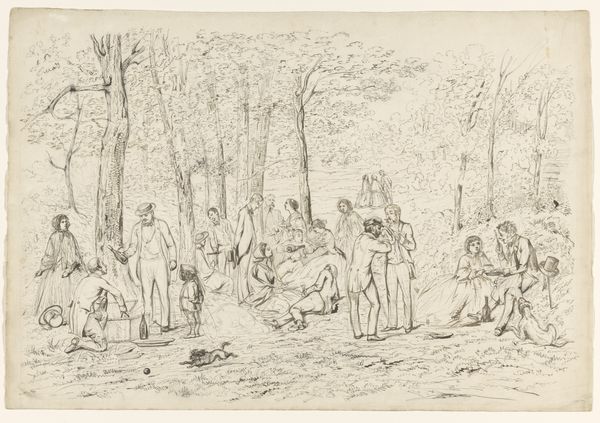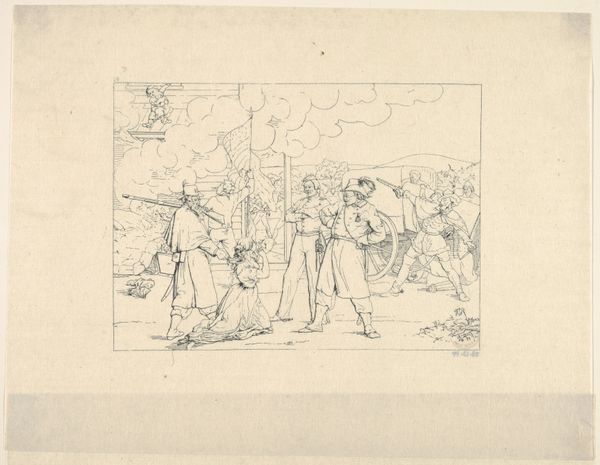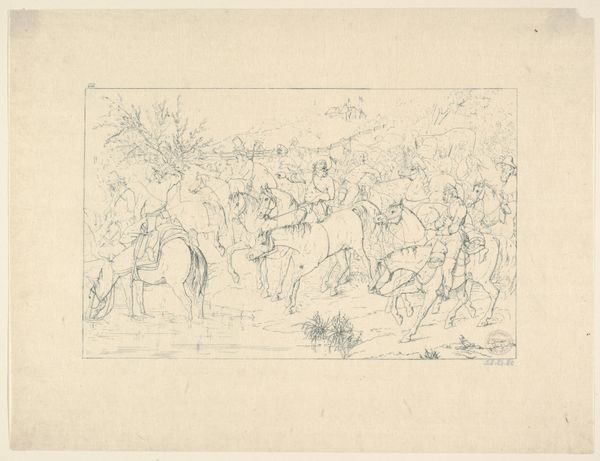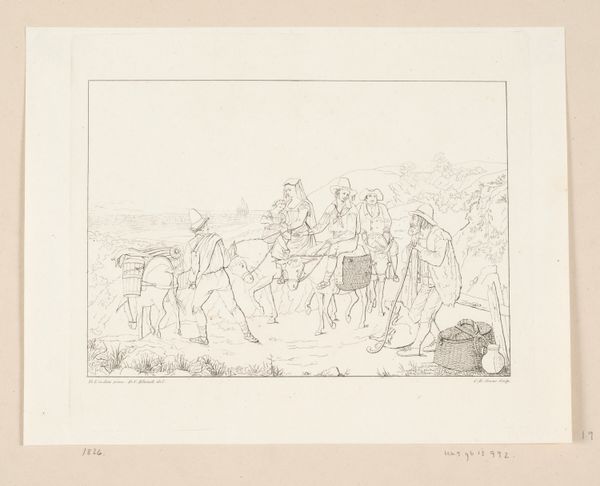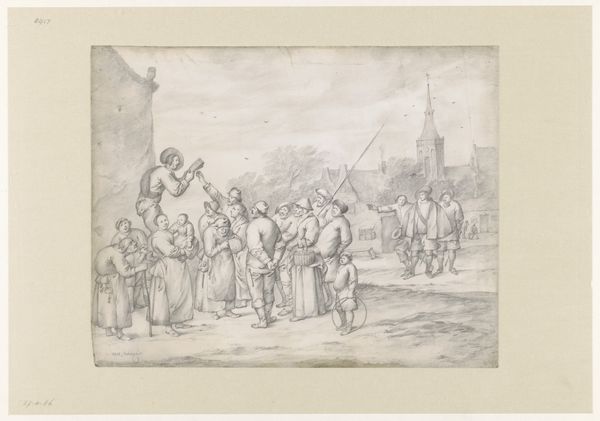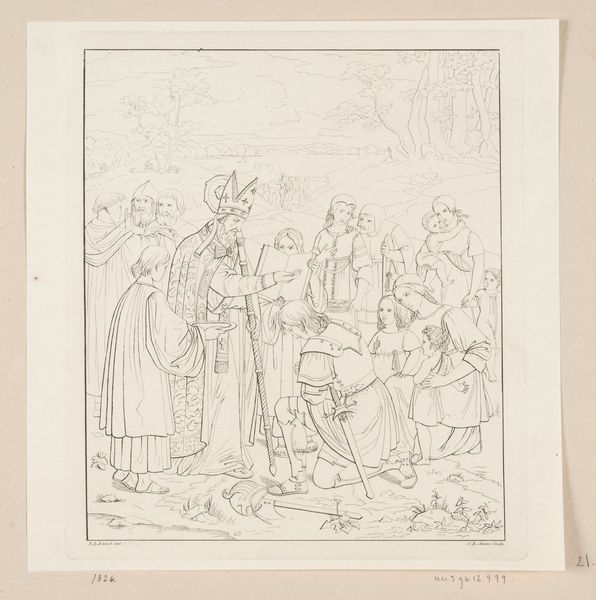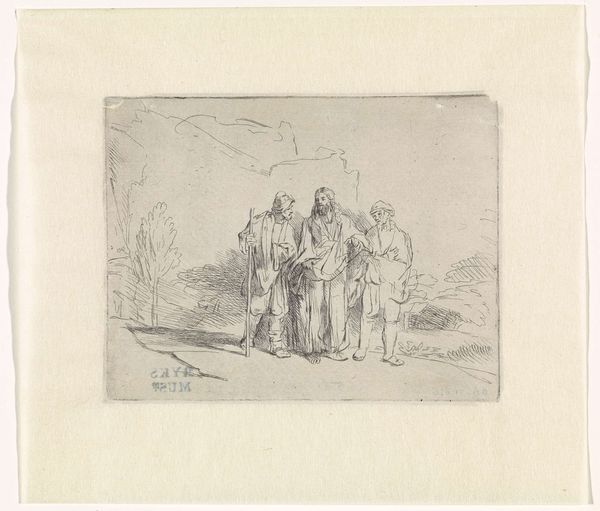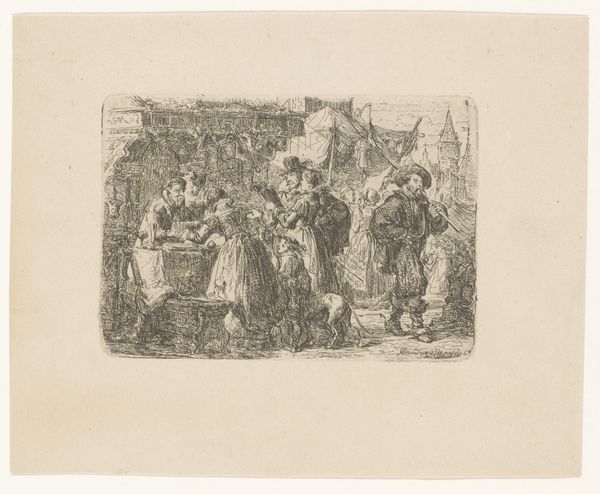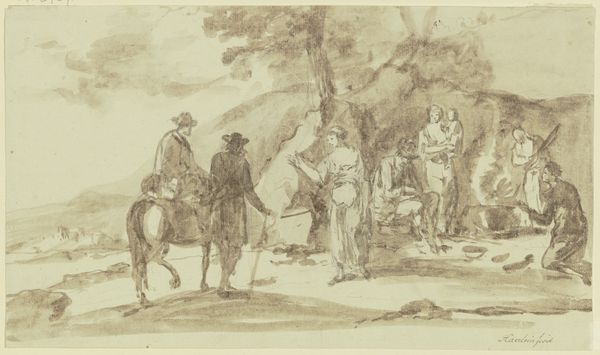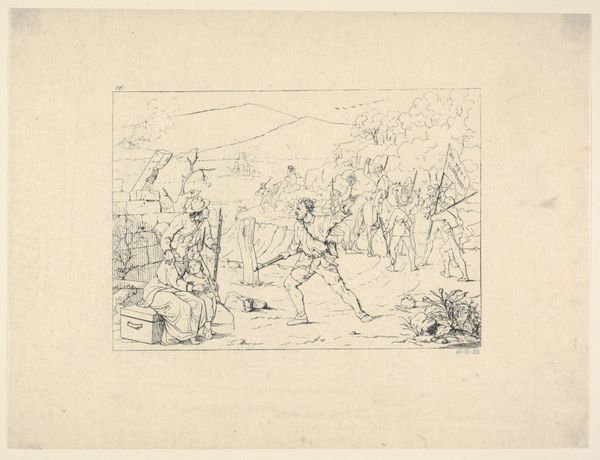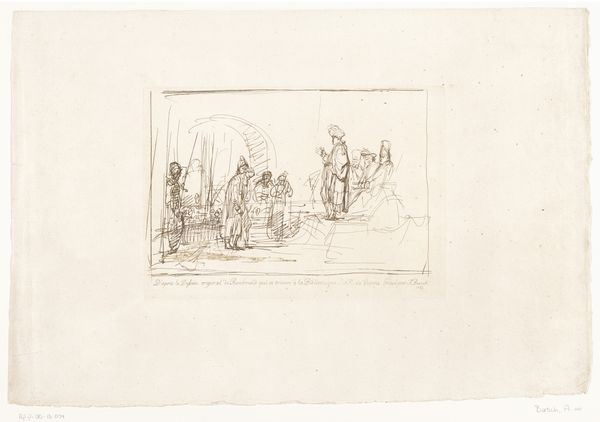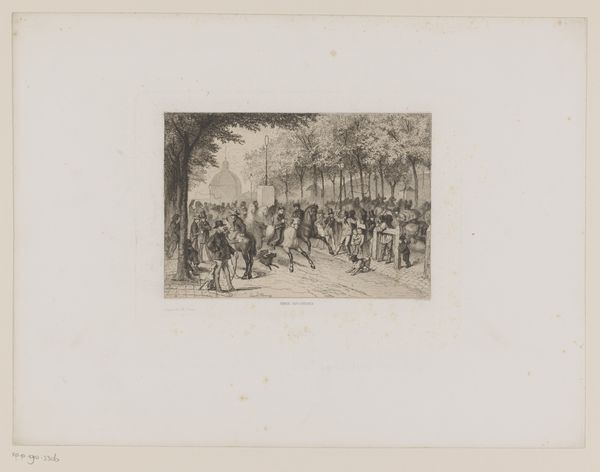
Prayer in Stonewall Jackson's Camp (from Confederate War Etchings) 1861 - 1863
0:00
0:00
drawing, print, engraving
#
drawing
# print
#
war
#
landscape
#
soldier
#
men
#
history-painting
#
engraving
Dimensions: Image: 4 13/16 x 7 1/16 in. (12.2 x 18 cm) Sheet: 7 15/16 x 10 3/8 in. (20.2 x 26.4 cm)
Copyright: Public Domain
Curator: This is Adalbert John Volck’s "Prayer in Stonewall Jackson’s Camp," one of his Confederate War Etchings made between 1861 and 1863. It offers us a glimpse into a Confederate encampment during the Civil War. Editor: It strikes me as oddly serene for a war scene, almost domestic. A gathering of men, some kneeling, others observing—there’s a strong sense of solemnity despite the casual disarray of the camp. Curator: Volck, a staunch Confederate sympathizer, uses the etching to portray the spiritual fortitude of the South. Think about the social history of the period—this image was part of a larger propaganda effort. How might we interpret this within today's discussions around monuments and the narratives they uphold? Editor: Absolutely, we must approach this through the lens of critical race theory. The idealized depiction of Confederate soldiers, their supposed piety... it serves to legitimize a brutal system of slavery and white supremacy. Consider the power dynamics at play – who is included in this sacred moment, and crucially, who is excluded? Curator: And the artistic choices themselves amplify that idealization. The detailed rendering of the men's faces, the subtle use of light and shadow—it romanticizes a moment within a much larger context of violence and oppression. It does reflect Volck’s sentiments during a difficult socio-political time for the Confederacy, attempting to build morale in a diminishing cause. Editor: It raises profound questions about the role of art in shaping historical narratives, right? Is this historical document, or a romanticized projection of a desired reality? What does it mean to display such works today, without explicitly challenging the ideologies they represent? Curator: It reminds us that history is never neutral. Examining art like Volck's is not about celebrating the Confederacy, but understanding the insidious ways in which art can be weaponized to promote dangerous ideologies. By displaying such works critically, alongside interpretive material, galleries take ownership to educating the public. Editor: Precisely. It forces us to confront uncomfortable truths and interrogate the visual culture that continues to shape our understanding of the Civil War and its legacies. We’ve certainly been challenged by its intersectional history.
Comments
No comments
Be the first to comment and join the conversation on the ultimate creative platform.
